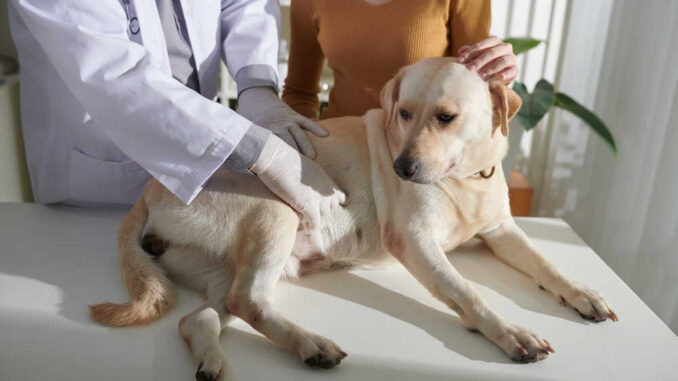
This article was updated on March 10th, 2024

Discovering a hard, immovable lump on your dog can be concerning even for the most experienced dog owner. While it’s natural to worry, the best way to help your dog is to remain calm, understand the possible causes, and get the lump checked by your vet when you can. This article aims to shed some light on the most common causes.
What are the top causes of hard, immovable lumps in dogs?
1. Tumors
Unfortunately, tumors are a common cause of hard, immovable lumps. While firm, well-attached lumps are more commonly cancerous tumors, they can occasionally be benign. It’s best to see your vet and discuss further testing if they suspect a lump may be a tumor.
Soft tissue sarcomas
This group of tumors arises from connective and soft tissues anywhere on the body, accounting for 15% of all skin and subcutaneous tumors in dogs. They are often well attached to the underlying tissues, firm and often fibrous feeling with an irregular, bumpy shape. However, many are softer and less well-attached, so they are not detected in the early stages. The skin may or may not be attached to the tumor.
These tumors can grow rapidly or more slowly but are very locally invasive, so they require surgical removal with wide margins. Depending on the individual tumor, the prognosis can be fair but is often guarded. Early treatment while the lump is small gives the best prognosis.
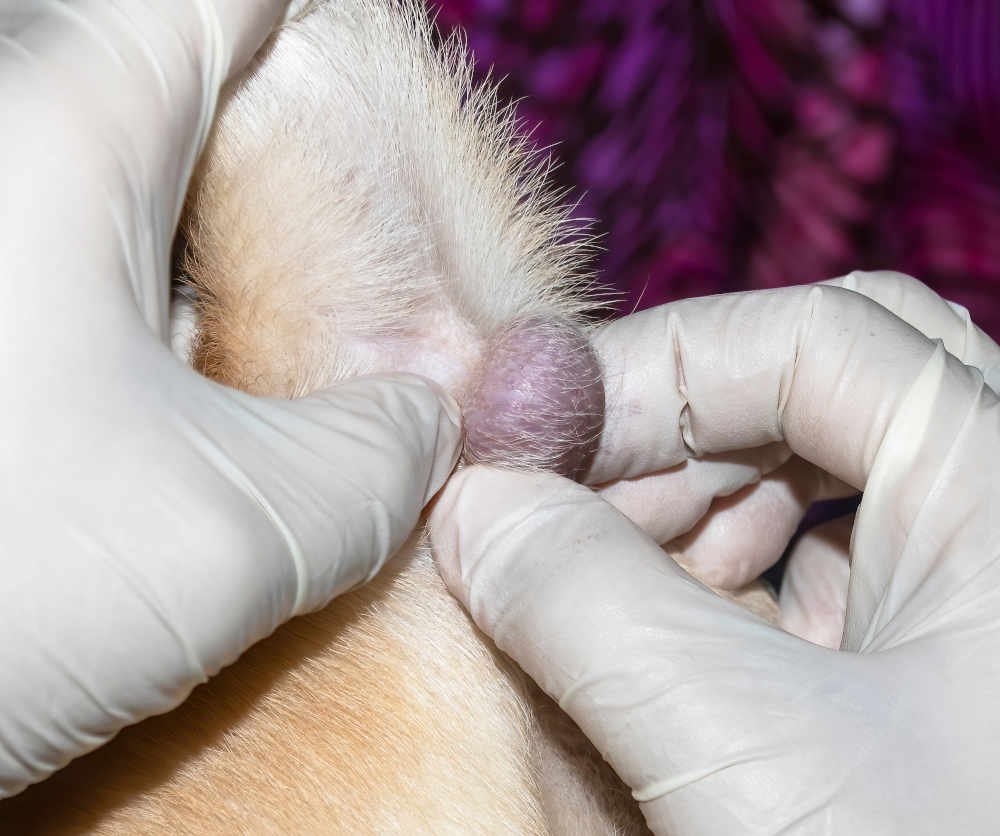
Bone tumors (e.g. osteosarcoma)
Approximately 5% of canine tumors – and 85% of bone tumors in dogs – are osteosarcomas. These usually develop in middle-aged to older, large breed dogs, typically in the long bones of the legs. Osteosarcomas can cause the bone to feel thickened or form a palpable lump, but they are often detected before this stage as they cause the destruction of bone, pain, and lameness.
Other bone-related tumors include chondrosarcoma (from cartilage) and fibrosarcoma (from connective tissue).
These tumors can be quite aggressive, so if you notice a thickened, hard, painful area on your dog’s legs, you should see your vet at the earliest opportunity.
Benign tumors e.g. fatty lumps (lipomas)
Although benign tumors are often softer and freely movable, it’s worth noting that there can be exceptions to this rule. Benign tumors like fibromas and lipomas are usually slow growing and do not cause irritation. Lipomas are typically soft and movable but in some cases they can develop beneath a layer of muscle, resulting in a very firm and immovable lump.
Even if your dog already has some benign lumps, if a new lump is firm and immovable your vet is likely to recommend testing to rule out cancer. View more pictures of lipomas.
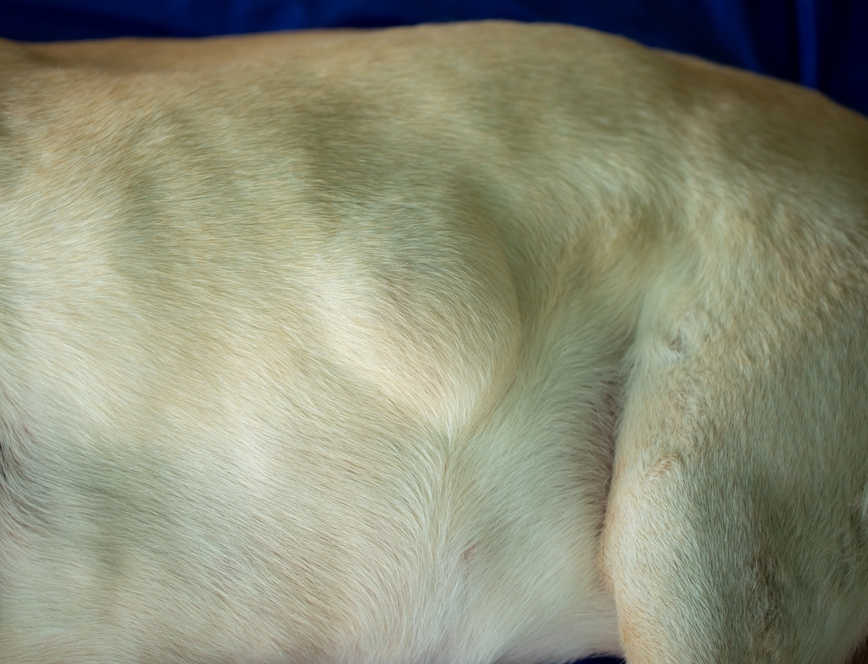
2. Abscess or foreign body
An infected wound or foreign body can cause the rapid development of a firm, painful, and relatively immovable abscess. The surrounding area is usually sore and inflamed and you may notice pus. Abscesses need relatively urgent veterinary attention to prevent the infection worsening. They often need draining or flushing out, antibiotics, and pain relief. If a foreign body is present, minor surgery may be required to remove it. Once any foreign material is removed and the infection is treated, these usually resolve well.
3. Cysts
While cysts often develop in the skin and move freely over underlying tissues, they can occasionally be less freely moveable. They’re usually firm, smooth, and not inflamed (unless they’ve ruptured).
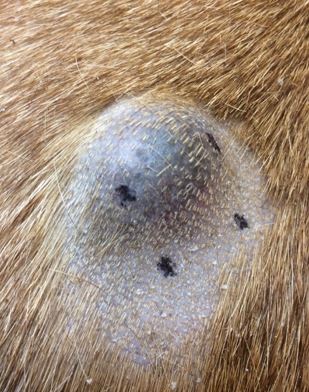
Cysts are usually benign and can be diagnosed based on material expressed when a fine needle aspirate is taken, although submitting this for further analysis can more definitively rule out cancer. They don’t usually require further treatment, although surgical excision will be required in most cases to remove the cyst’s lining and prevent recurrence.
4. Anatomical structures
I’ve seen several dogs brought in for hard lumps that have turned out to be normal parts of their anatomy. While I’ve never met a vet who minds being able to reassure an owner that the lump they’re concerned about is a floating rib, it’s worth checking if it might be before you see a vet. Bear in mind that these are always symmetrical. If you’re still not sure, it’s worth getting your vet to check.
Some normal anatomical ‘lumps’:
- The sagittal crest and ‘external occipital protuberance’ at the back of a dog’s head (dog occiput)
- Floating ribs
- The lumbar fat pads (either side of the spine above the hips) – typically in very overweight dogs
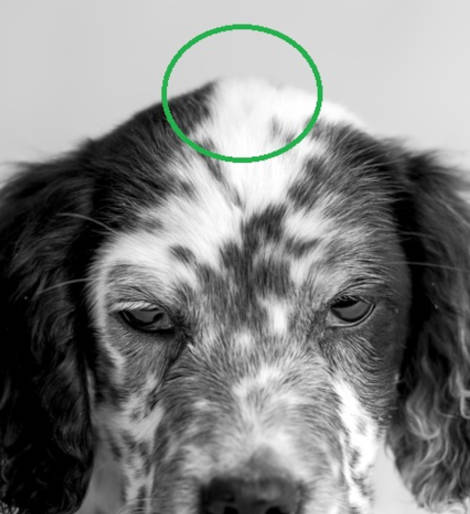
View more lumps and bumps on dogs.
Signs that you need to see your veterinarian
Any lump that is hard or immovable should be discussed with your vet at the earliest opportunity, as even small or slow-growing lumps could be significant.
What will happen at the vet
After examining your dog, your vet may recommend further tests depending on the potential diagnosis. This may include:
- Fine needle aspirate – for lumps that are soft enough, a sample can be taken with a small needle. Many sarcomas do not provide a good sample using this method, so your vet may instead recommend a biopsy. Usually $150-200.
- Biopsy – a larger biopsy of the lump, usually under sedation or anesthetic, to get a definitive diagnosis. Usually $400-800 depending on the procedure.
- X-rays – if a lump may be associated with the bone, x-rays are often valuable.
Depending on the results, your vet can then discuss possible treatments.
References
Dobson, J.M. and X., L.B.D. (2011) BSAVA Manual of Canine and Feline Oncology. Quedgeley: British Small Animal Veterinary Association.
Related posts:
Disclaimer: This website's content is not a substitute for veterinary care. Always consult with your veterinarian for healthcare decisions. Read More.


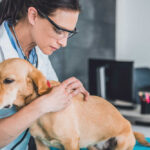
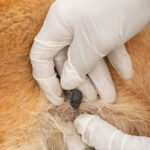
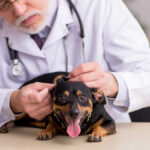
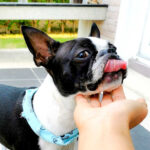
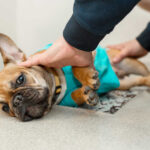
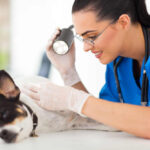
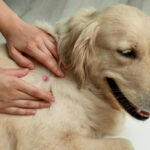
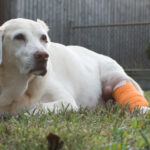
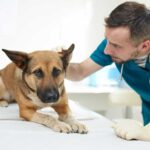
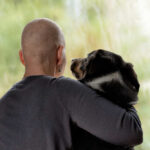
Be the first to comment